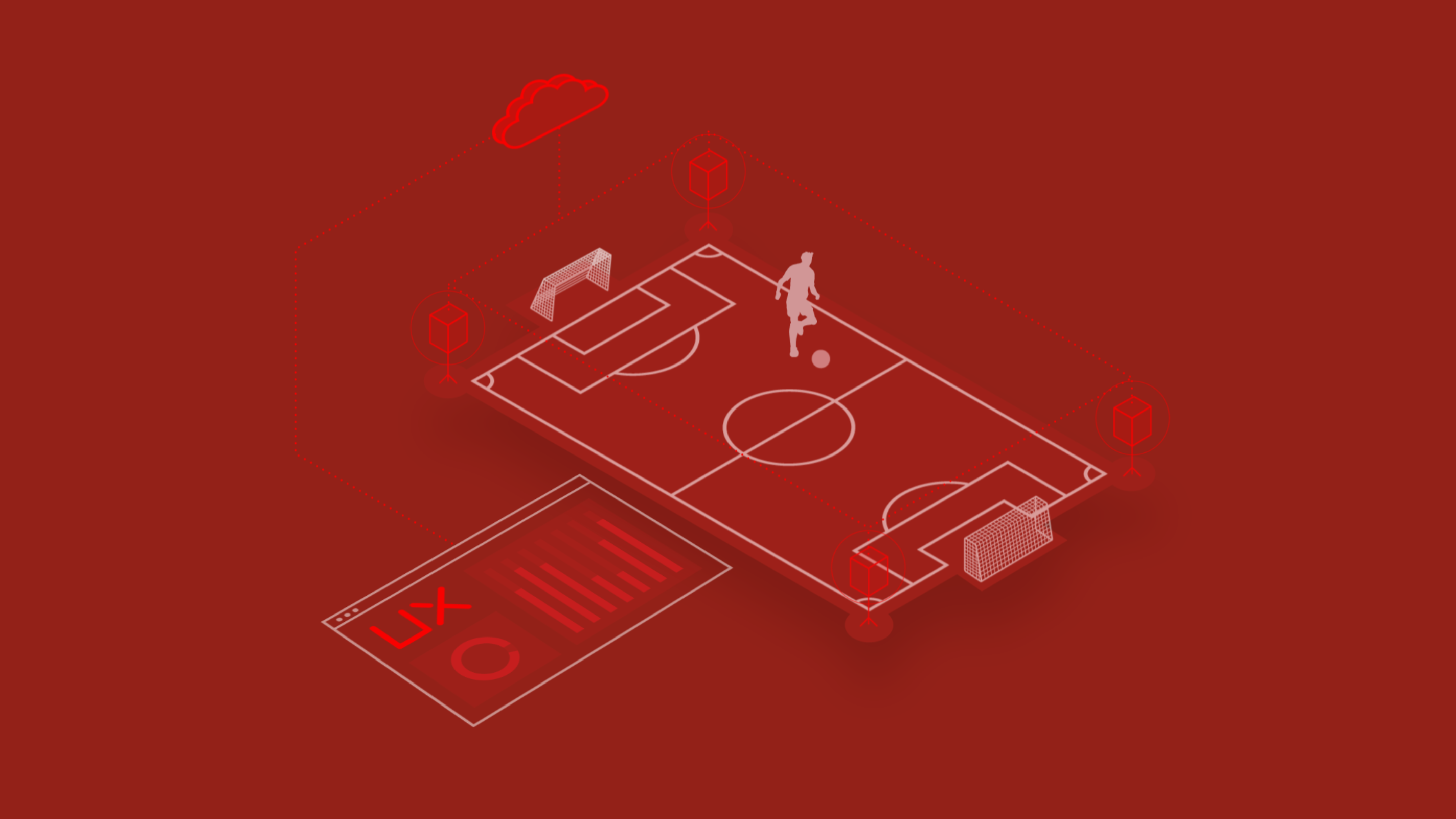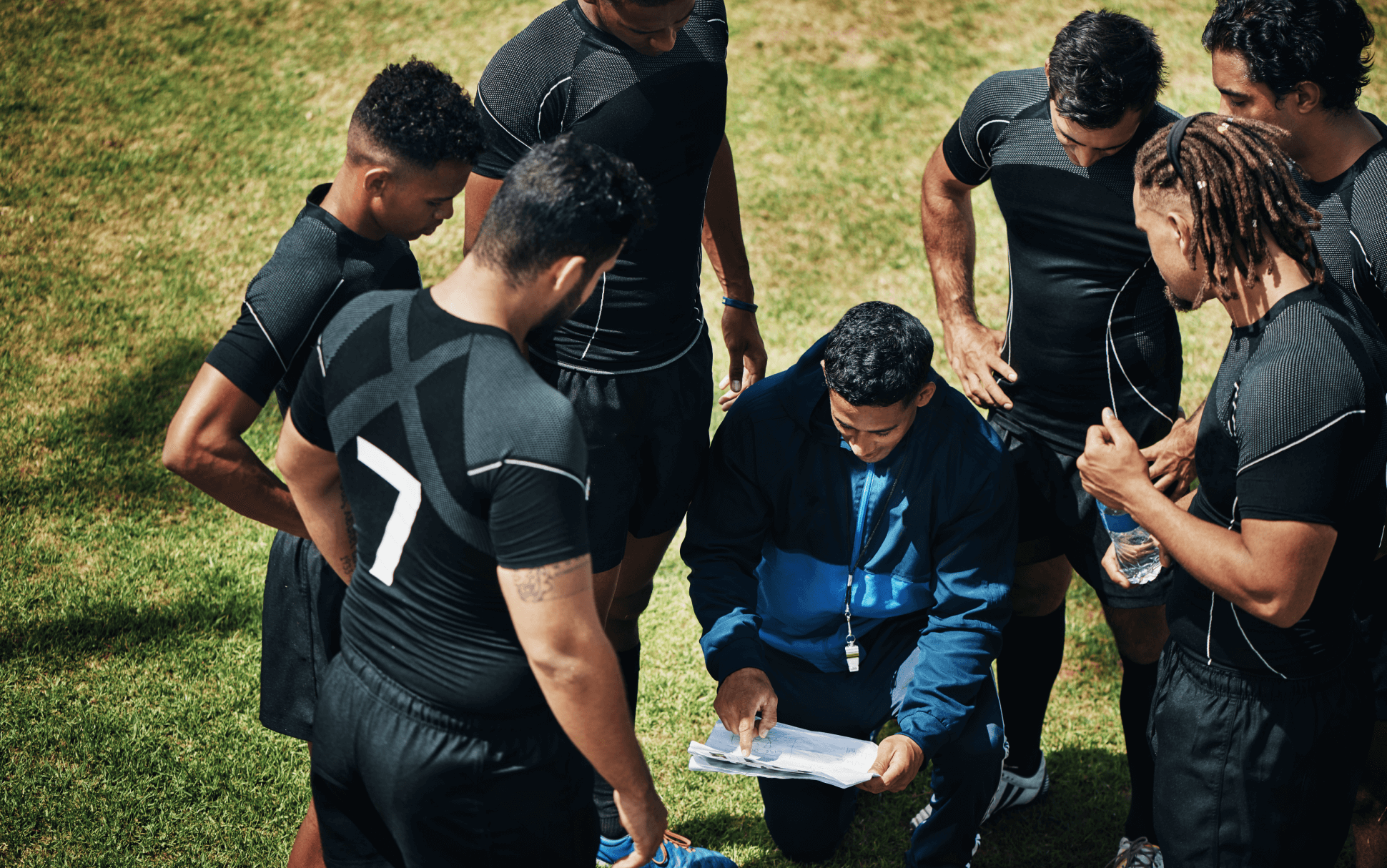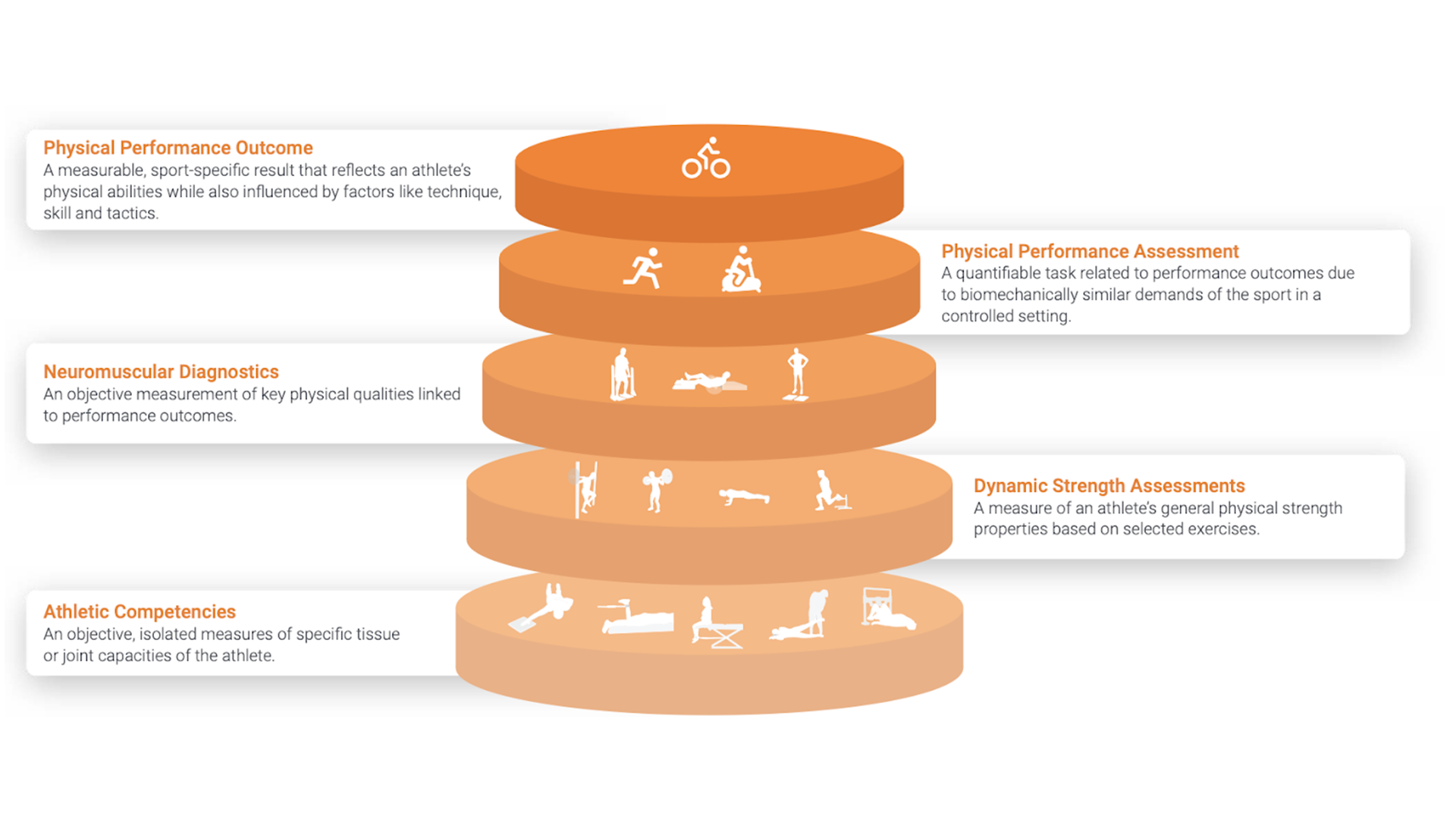Why track load?
Given the relationship among athlete workloads, injury and performance athlete monitoring has become critical in the high-performance sporting environment(1).
Gabbett TJ, et al. Br J Sports Med Month 2017 Vol 0 No 0
Load monitoring is the process of tracking and analyzing the physical demands placed on an athlete or team during training and competition. It is an important aspect of sports science and performance optimization, as it helps coaches and sports scientists understand how an athlete’s body is responding to the demands of training and competition, and to identify potential issues that may affect performance or increase the risk of injury.
There are several reasons why it is important to track load in sports:
- To optimize training and prevent overtraining: coaches can ensure that athletes are training at the right intensity and volume to maximize performance and minimize the risk of overtraining or burnout.
- To identify potential injuries: it helps coaches and sports scientists to identify changes in an athlete’s load pattern that may indicate an increased risk of injury. For example, if an athlete’s load suddenly increases significantly without a corresponding increase in fitness, it may indicate that the athlete is at risk of an overuse injury.
- To improve performance: coaches can identify areas where an athlete may be lacking in condition or is overtrained, and adjust training accordingly to optimize performance.
- To monitor recovery: it can also be used to track an athlete’s recovery after training or competition, to ensure that they are adequately rested and ready to perform at their best.

How to divide load?
In the context of load monitoring in sports, internal load refers to the physical demands placed on an athlete’s body during training and competition, while external load refers to the work performed by the athlete and external factors that influence an athlete’s training and performance.
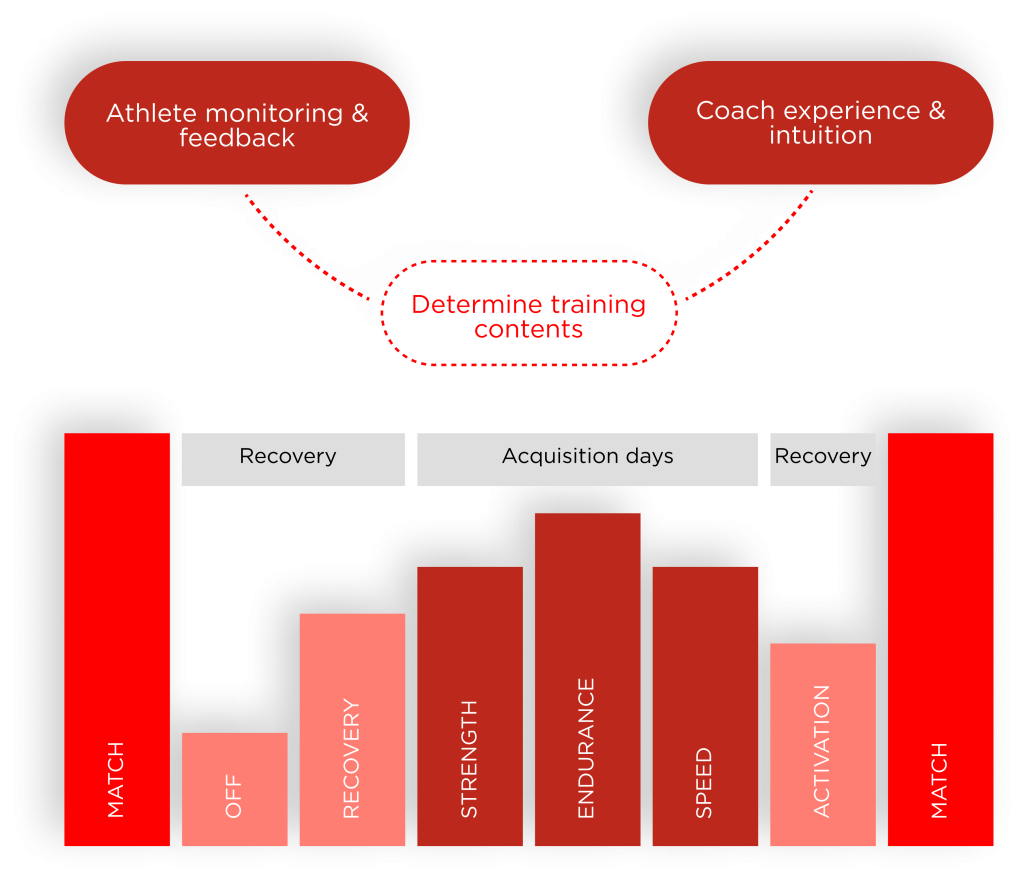
Internal load can be measured using a variety of methods, including subjective ratings of perceived exertion, heart rate, lactate concentration and biochemical markers (such as blood and saliva samples). Internal load may be influenced by factors such as intensity, duration, and frequency of training sessions, as well as the specific physical demands of the sport (such as running distance in distance running, or the number of tackles in rugby). The most used method to track external load is the use of Global positioning system (GPS) technology. GPS in team sports permits measurement of player position, velocity, and movement patterns. GPS provides scope for better understanding of specific and positional physiological demands of team sports and can be used to design training programs that adequately prepare athletes for competition with the aim of optimizing on-field performance(2). There are also new technologies that are proving to be even more efficient in the tracking process such as Ultra-Wideband (UWB) technology. It is a wireless communication technology that uses a wide range of radio frequencies, typically spanning from 3.1 to 10.6 GHz. The main advantage of UWB is its ability to transmit a large amount of data over a short distance with low power consumption. UWB is mainly used for short-range wireless communications such as wireless personal area networks (WPANs), location-based services, and high-precision positioning systems. Additionally, UWB signals are less susceptible to interference from other wireless devices, making them useful in environments with high levels of wireless congestion. Ultra-Wideband (UWB) technology can be used in various sports applications to provide accurate and precise location tracking.
Some examples of UWB application are:
- Player tracking: to track the movement and positioning of athletes in real-time, providing coaches and analysts with valuable data on player performance and strategies.
- Referee assistance: to assist referees in determining the positioning of players and the ball on the field, helping to make more accurate calls.
- Training: to track the training progress and performance of athletes, providing coaches with data on workout intensity, distance traveled, and more.
- Sports broadcasting: to provide enhanced viewing experiences for sports fans, by providing detailed insights into on field actions in real-time.
- Safety: to alert the coaches and trainers if an injury occurs.
- Fan engagement: to provide interactive experiences for fans, such as virtual tours of stadiums, or real-time statistics and information on players and teams.
On the other hand, we can find factors that influence an athlete’s training and performance. These may include factors such as the weather, travel, sleep, nutrition, and other environmental or psychological stressors.
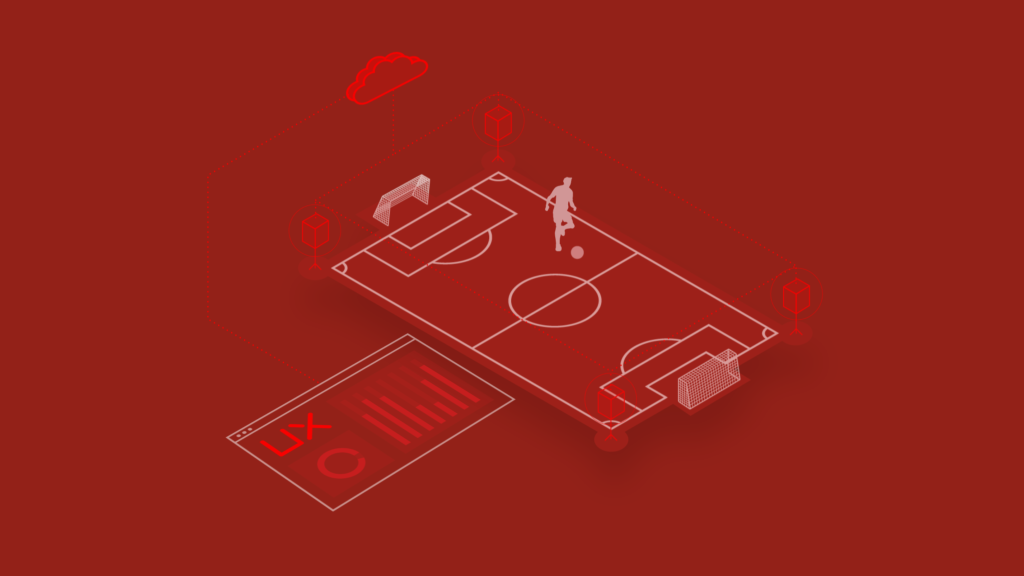
It is important to track both internal and external loads in order to gain a complete understanding of an athlete’s training and performance. By tracking both internal and external loads, coaches and sports scientists can identify patterns and trends that may be impacting athlete’s performance and make adjustments to training or other factors as needed to optimize performance and minimize the risk of injury.
Example in team sports – Football
There are many ways that football teams can monitor the load of their players during training and competition.
Some examples of load monitoring in football include:
- GPS/UWB tracking: used for tracking distance, speed, and intensity of an athlete’s movement during training and competition. This can provide valuable insights into the physical demands of soccer and help coaches to optimize training.
- Heart rate monitoring: can be used to track an athlete’s heart rate during training and competition, which can provide information about the intensity of their activity and help coaches to monitor recovery.
- Subjective ratings of perceived exertion: players can rate their perceived exertion on a scale (such as the Borg scale) after training sessions or matches, which can provide an indication of the overall physical demands of the session.
- Biochemical markers: blood or saliva samples can be collected from players to measure biochemical markers such as cortisol, testosterone, and other markers of stress and fatigue.
- Training diaries: record details of their training sessions and any other factors that may impact their performance (such as sleep, nutrition, and other stressors).
By tracking a combination of these and other metrics, football teams can gain a detailed understanding of the physical demands of their sport and the factors that influence their players’ performance and recovery.
Monitoring quadrants: how to make sense of the data
In his paper, Gabbet(1) provides a step-by-step strategy for interpreting athlete monitoring data from the exposure of athletes to a single external training stimulus, through to the subsequent exposure of another training stimulus. The inner cycle describes (1) the workload the athlete performed (external load), (2) the athlete’s response to the workload (internal load), (3) whether the athlete is tolerating the workload (perceptual well-being) and finally (4) whether the athlete is physically and/or mentally prepared for exposure to another training stimulus (readiness to train/compete). When combined with each previous step, the subsequent step of the cycle provides insight into how to interpret the data and prescribe an intervention (e.g., additional training or extra recovery) to facilitate appropriate training adaptations (1).
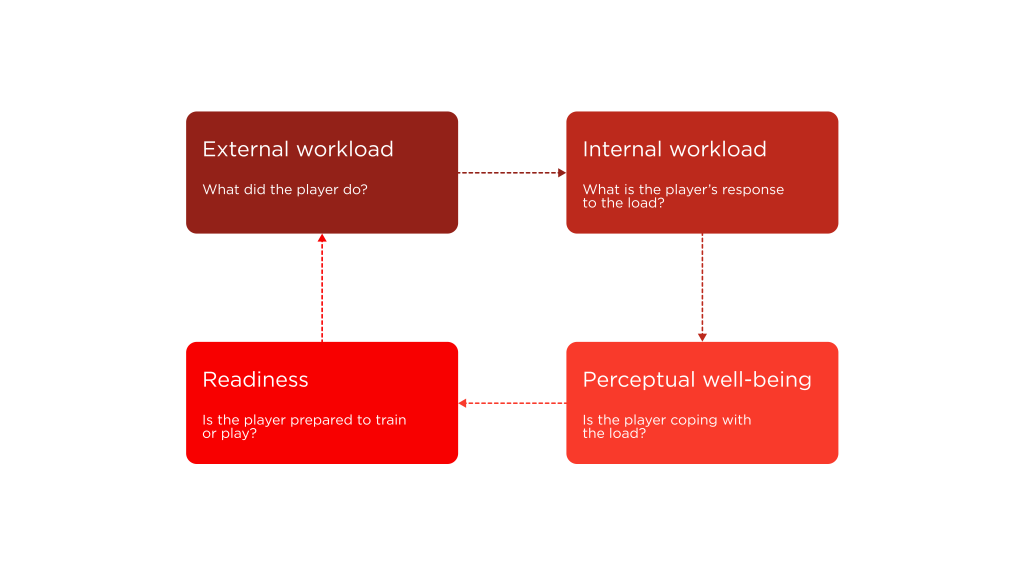
For example, first examine the relationship between external load and internal load. If an athlete has performed a greater external workload than planned and their internal workload is also higher than expected, it may be necessary to decrease workload. Maladaptive training responses may also be identified. Combining measures of workload with perceptual well-being scores provides insight into whether the athlete is tolerating training (1). Factors other than high workloads can contribute to poor well-being; if athletes report that they are not coping with the training program despite performing low workloads, an investigation of additional life stressors and lifestyle factors may be warranted. High workloads are not the only reason why an athlete may be experiencing poor well-being.
Take home message
Measurement is the first step that leads to control and eventually to improvement.
Athlete monitoring has become critical in high–performance sporting environments. We can divide monitoring load into two main categories, internal and external load. External load is the planned load and performed load from the athlete while the internal load is the reaction to that planned load. Both are very important if we want to have the whole picture regarding our player’s or team’s performance. Here we wanted to stress the importance and categorization of monitoring and provide you an example on how to make sense of monitoring done in the quadrant example. In the next few posts we will go deeper into explaining what load is, what are the pros and cons of every method and how to build monitoring process in low and high tech surroundings.
References:
- Gabbett TJ, Nassis GP, Oetter E, et al.The athlete monitoring cycle: a practical guide to interpreting and applying training monitoring data.British Journal of Sports Medicine 2017;51:1451-1452.
- Cummins C, Orr R, O’Connor H, West C. Global positioning systems (GPS) and microtechnology sensors in team sports: a systematic review. Sports Med. 2013 Oct.

